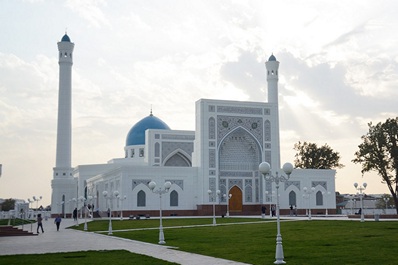TASHKENT
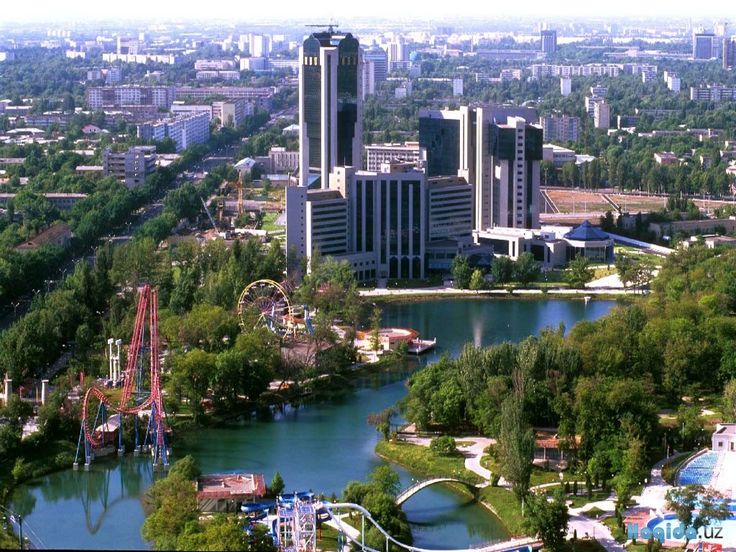
The district of Tashkent is in northeast region of Uzbekistan, between the west ridges of Tian-Shan mountains and Syr-Darya river. It has a continental climate with mild winters and dry and hot summers. Tashkent city is the administrative center of the district, where more than 2.5 million people live. Tashkent is the political, business, scientific, and cultural center of Uzbekistan as well as the main hub of the country, and it aspires to rank one of the beautiful cities in Central Asia.
History. Tashkent is more than 2,000 years old. Its name has been changed many times during its: Chach, Shash, Binkent, Toshkand. All of these names could be related to the Turkish word “Tash” (stone) that gave a name to the city Tashkent (means “stone settlement”). Actually, the city rose on a place with a similar name, located on the mountain crossroads that played an important role in trade between East and West. At that time, Tashkent was a citadel that repulsed attacks of nomad tribes. But Tashkent was also, and remains to be, an important international transport center.
Despite the fact that many of historical monuments were destroyed after the revolution of 1917 and others in an earthquake in 1966, unique historical monuments including the Kukeldash Medressah and Barak Khan Medrassahs erected in 16th century survive to this day.
During the years of independence, the capital of the Uzbek state has completely changed: many beautiful fountains have been constructed to decorate squares and parks of the city; newly constructed buildings decorated in national style look very impressive; and international airports and railway stations have been reconstructed to provide passengers with top service on the ground and in the sky.
Culture. Today Tashkent is famous as one of the world's science and cultural centers. The Alisher Navoi Academic Opera and Ballet Theatre is truly unique in its architecture and interior design. Theatrical Square with a splendid fountain adjoining the theatre is a favorite place of recreation for Tashkenters and guests of the capital.
There are more than 20 museums in Tashkent including the Uzbek Museum of Fine Arts and History Museum, one of the largest in Central Asia. Collections in the museum, would do honor to any capital city. The Tashkent metro, faced with marble, granite, and ceramic tiles, leaves an impression on the guests of the Republic. Decorated in an eastern style, it is considered one of the most beautiful and spacious metro networks in the world.
Sightseeing of Tashkent
Khastimom historical complex
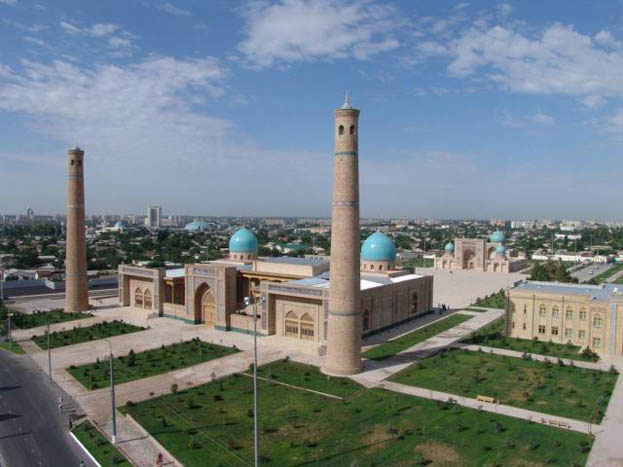
The mausoleum pictured here—built in the 14th century over the grave of respected clergyman and popular scientist, Khazret (full name is Abu-Bakr Mukhammad Kaffal-Shash)—is a part of the Khazret Imam Ensemble. Because Khazreti's grave has historically been a sacred place, the surrounding area in the Sebzar part of the old city received a name of Khazret-Imam. The complex is generally known as Hasti Imam located in an old residential district of Tashkent, near Sebzar residential area. According to the fact, it was the center of the city called Shash in the middle ages. The complex of historical and architectural monuments formed around Mazar Kaffal Ash-Shashi - the first Imam and preacher of Islam in Tashkent, also he was the famous theologian and linguist, after whom the complex was named "Hazrati Imam" ("The Holy Imam").
Kaffal Ash-Shashi made pilgrims to Mekka several times; he visited Damascus, Baghdad, and Hejaz. He learned the science of theologian and linguist in medrassahs of Bukhara, Samarkand and Termez. The Great theologian was deeply respected by people, so he got the honoured title "the Great Imam" in the Arab world. Hazrati Imam Complex consists of following architectural monuments: the Islamic Institute of Imam al-Bukhariy, Kaffal Ash Shashi Mausoleum, the building of Muslim Board of Uzbekistan, Friday Mosque (with two 56 metres high minarets), Library with holy Koran, Tilla Sheikh Mosque, Barak Khan Medressah.
The Library is stored more than thirty thousand books and more than 3000 manuscripts among them. The Holy book – Koran (Uthman Koran from 6th century) is the special value for believers.
Khoja Ahror Vali Juma Mosque
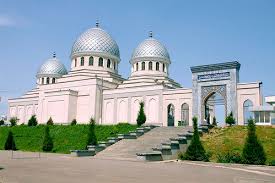
This is the third largest cathedral mosque in Uzbekistan surpassed only by two structures of this kind – the Bibi Khanim Mosque in Samarkand and the Kalyan Mosque in Bukhara. The Juma Mosque forms the basis of the Registan Ensemble located in the area of Chorsu Square. Construction of the mosque is delivered to the 15-18th and the end of the 19th centuries. The main Juma Mosque of Tashkent has been completely rebuilt, and now not one but three domes crown the old city hall.
Kukaldosh Medrassah
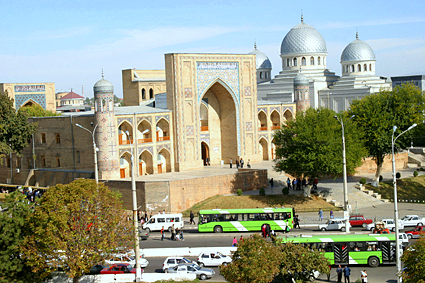
Kukeldash Medressah — one of Central Asian largest and still preserved madrassas dated by the 16th century is stately located on the highland close to the Chorsu Square. Madrassa has a traditional composition: a vast inner yard built up with hujras; darskhona and mosque are located in the corners. At the end of the 18th century the mosque was used as a caravansary, in 1860 it serviced as a fortress for the Kokand Khans. The monument has been restored for future generations.
Mustaqillik (Independence) Square

This is the main square of the Republic of Uzbekistan, a symbol of the independence of the people. The buildings of the Cabinet of Ministers and the Senate are located here. The square's entrance is decorated by the Ark. The road under it leads to the square where the Monument of Independence and Humanism (consisting of two statues: the "Independence" and the "Happy Mother") is located. This monument signifies the sovereignty of Uzbekistan, represented by the gold color globe with the state outlines. While it does not show its real geographical location, it symbolizes the aspiration of the young state to join the world community and be recognized by many countries.
Amir Temur Square and Monument
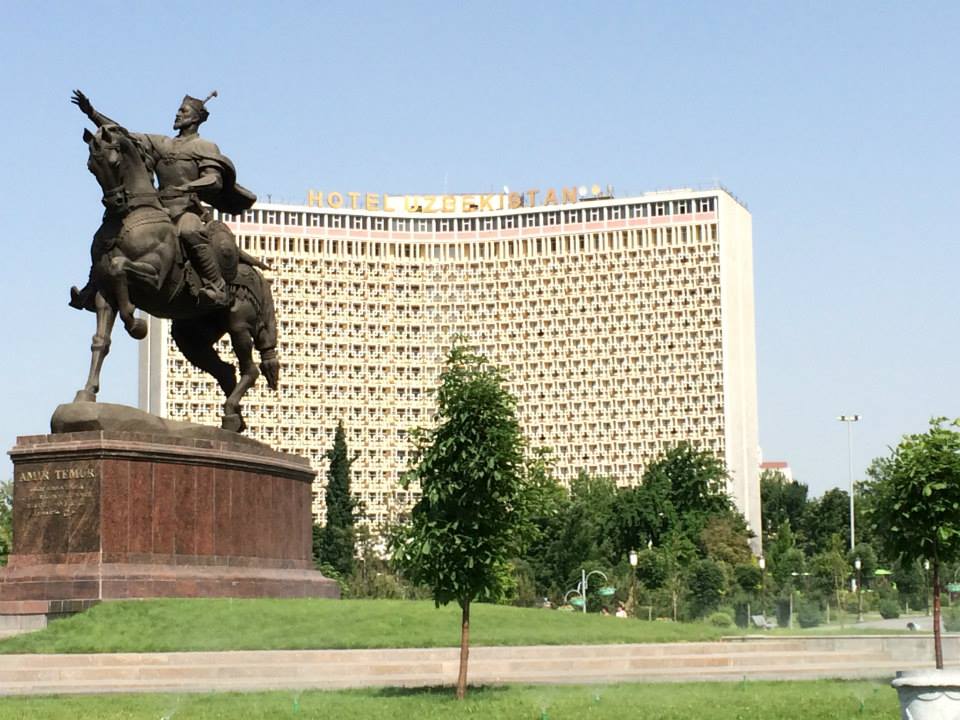
The monument of Amir Temur is an important landmark in Tashkent, a symbol of independence. It is located just in the center of the capital city, under the green-leaved branches of Amir Temur Square. Amir Temur is sitting on his horse, clad in battle garments, his steed in his left hand, his right hand stretched over the people meeting him, proudly wearing a crown as if only just returning from a victorious battle, to announce the coming of peace and tranquility.
The Academic Opera and Ballet Theatre named after Alisher Navoi
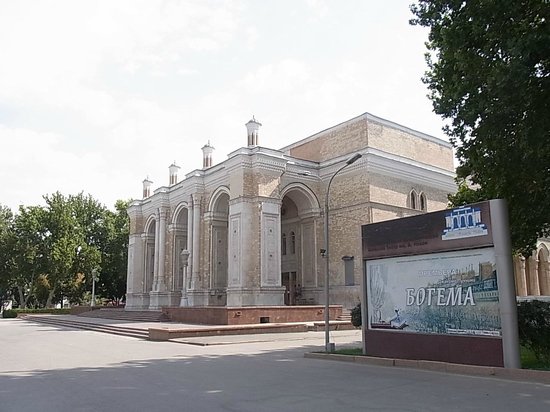
The theater was constructed in 1947 by architect Schusev A.V (famous architect who had been responsible for the tomb of Lenin in Kremlin). One year later it was named after poet Alisher Navoi. The Navoi Opera and Ballet Theatre is truly unique in its architecture and interior design. The interior is beautifully decorated with marble carvings. Theatrical Square, with a splendid fountain adjoining the theater, is a favorite place for residents and guests of the capital.
Tashkent TV Tower
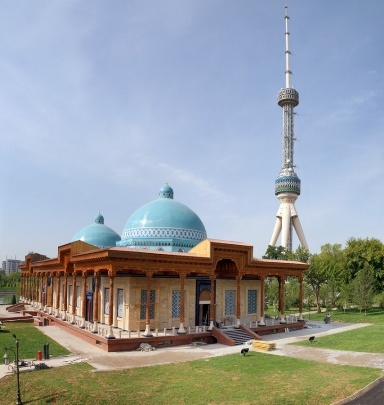
Built and put into operation in 1985, the Tashkent Television Broadcasting Center is the highest construction in Central Asia. At 375 meters, the Tashkent TV Tower is a member of the World Federation of Great Towers. It is the 9th tallest tower in the world and the second in the Commonwealth of Independent States after the Ostankino Tower in Moscow. Diners can have dinner in the tower's rotating restaurant, which sits 110 meters in the air, and look out over Tashkent.
Japanese Garden in Tashkent
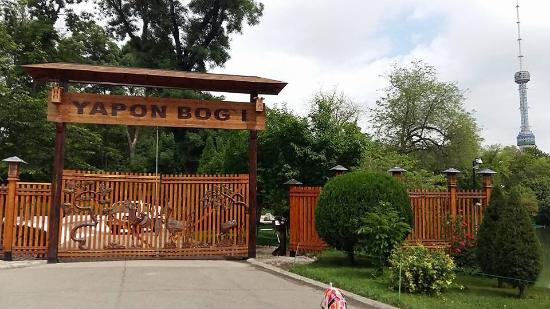
The Japanese stone garden near the Uzexpocentre is a real “piece of Japan,” created by Japanese artists. The garden is surrounded by beautiful old trees. The bank of the nearby lake has been restored and planted with Sakura trees, the sacred tree of Japan, which blossoms here in spring. Visitors can take boat trips from a Japanese-style pier. A Japanese style teahouse is located in the center of the garden, which is an elegant combination of the beauty nature has to offer.The Japanese Garden in Tashkent
Sheikhantahur Complex
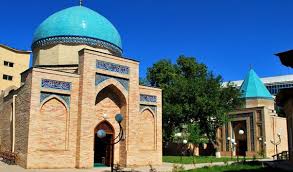
Yellow color bricks were used for construction of the museum in honor of Sheikh Khavendi Tahur who died in 1355. It is assumed that it was constructed in the first part of the 19th century during the reign of the Kokand Khans.
Abulkasim Medrassah
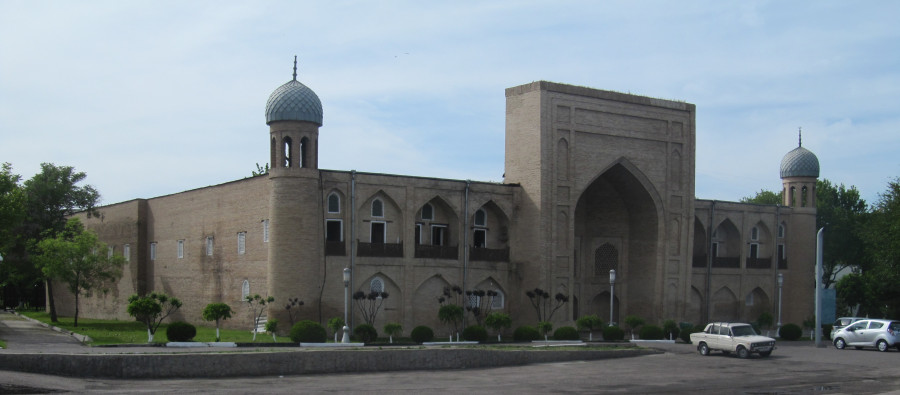
This monument was built in honor of the great thinker of past times, Abulkasim. The madrassa is located in the south part of old Tashkent, not far from the Beshagach former gates, and reminds visitors about the grandeur and beauty of Tashkent's ancient architecture. According to the archaeological research, historical documents, and legends “the first stone” of the Abdulkasim Madrassa was laid at the beginning of the 19th century. In ethnographical materials of 1908, this monument was described by N. Ostroumov as a place of honor, popular far beyond Tashkent.
Yunus Khan Mausoleum
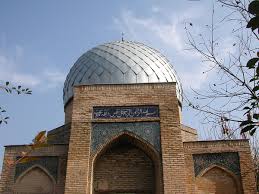
One of the ancient and few monuments in Tashkent of the Temurid epoch, this mausoleum was constructed after the death of the Tashkent ruler Yunus Khan, the descendant of Ghengis Khan (1415—1487). The mausoleum of Yunus Khan—a poet and writer, and grandfather of great Babur—was built at the end of the 15th century. The building was restored many times and much changed in the course of time.
Polish-Catholic Church (1902)
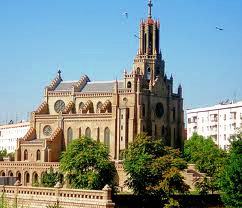
It stands out against the metropolitan background of the city, both with its scope and the architecture. A Catholic Cathedral, commonly called “The Polish Church,” whose construction was stopped during the Soviet era. The Cathedral, even as an unfinished construction, impressed onlookers. It was only after independence that many believers returned to their traditional religion. The beautiful stained-glass windows are similar to those of the Krakow Castle, and windows depict local themes. The renovated church is now the new spiritual center for people from Tashkent and guests of the republic. Masses are read in three languages: English, Russian, and Korean. People can also enjoy wonderful organ concerts on the weekends.
The Minor mosque is one of new sights of Tashkent located in the new part of the city, near to the UzExpoCentre and Hotel International. Opened on 1st October 2014, on the eve of the Eid holiday, and has become one of the favorite places of city residents for evening strolls. Minor mosque is located on the embankment of the Ankhor channel and is surrounded by a landscaped area.Construction of the mosque began in the summer of 2013 and was done in the best traditions of the eastern architecture. At the same time, Minor mosque differs from old brick mosques with its white marble finishing. It shines under the clear sky and its turquoise dome seems to be vanishing in the sky. Its capacity is more than 2400 people. Minor mosque is divided to the open front part with terraces, and big round hall with gold plated mihrab (a semicircular niche in the wall of a mosque that indicates the qibla (the direction of the Kaaba in Mecca and the direction Muslims should face when praying), adorned with writings from Koran.
Minor Mosque does not have a long history yet, but don’t miss your chance to have a look at Minor mosque in all its white marbled glory.

